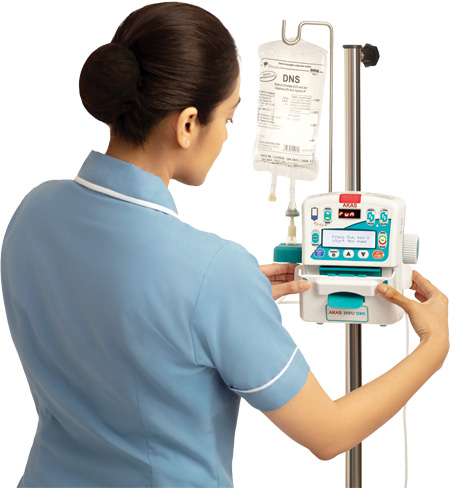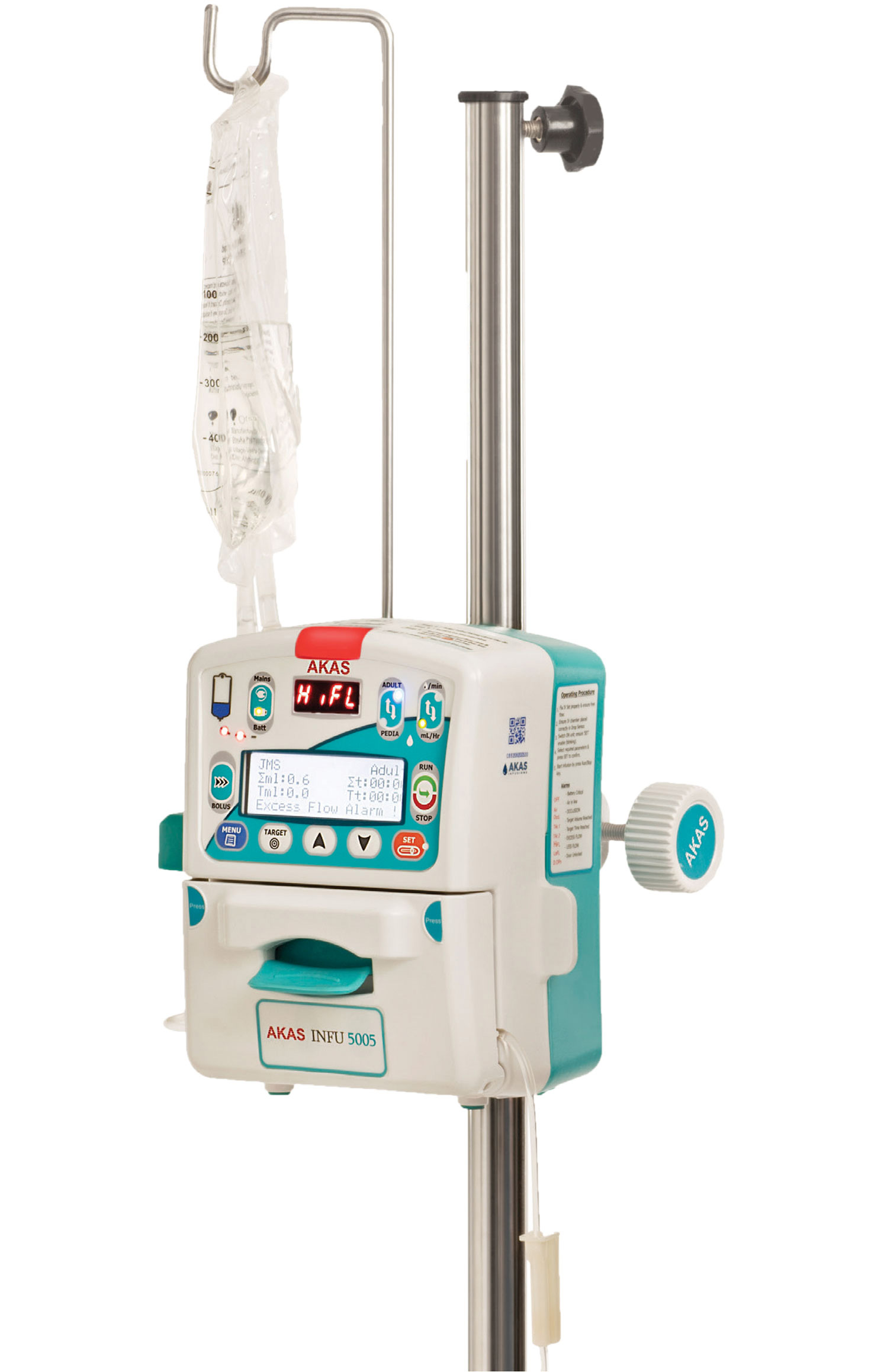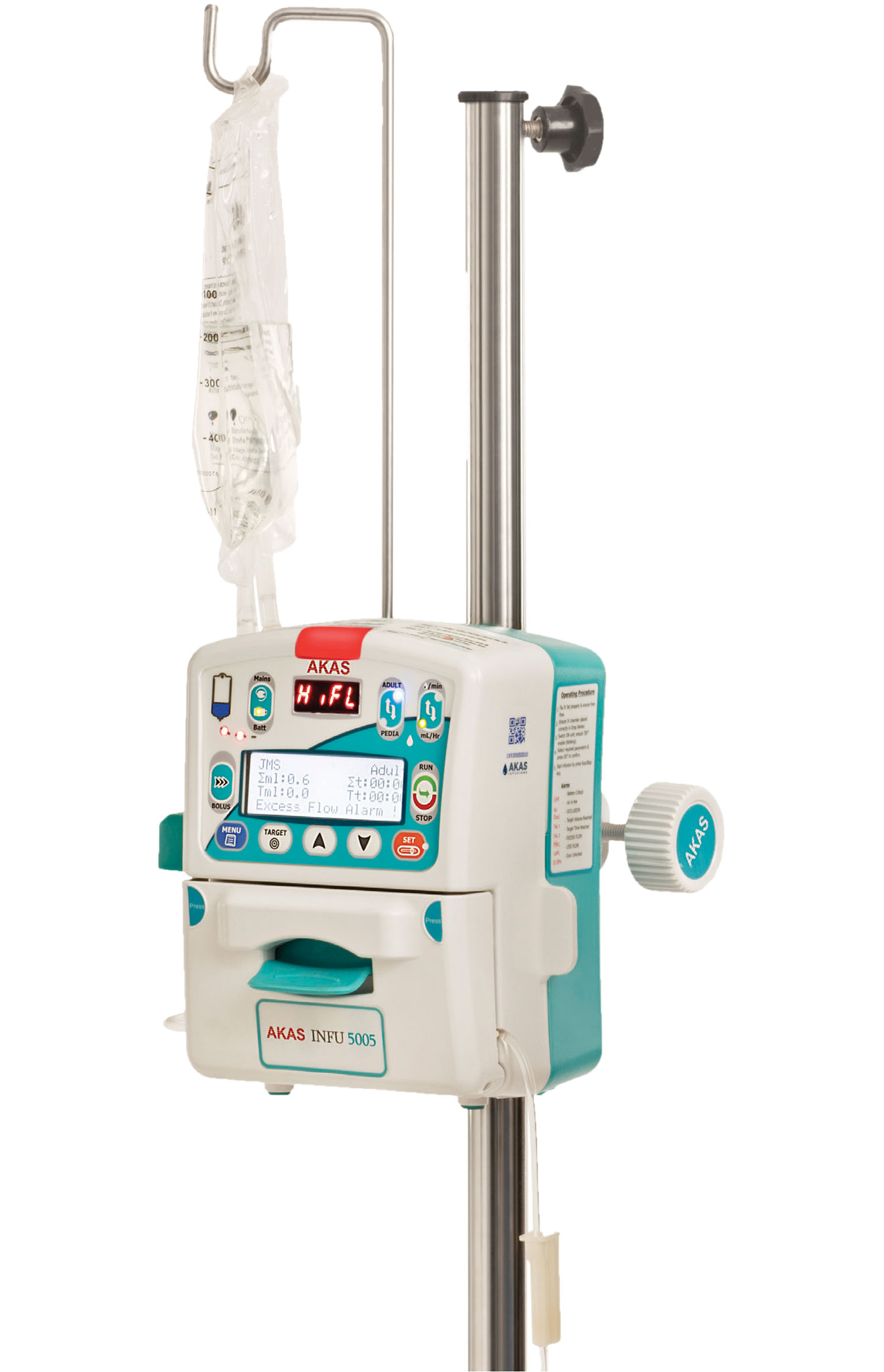

Executives working in the Volumetric pumps segment often wrongly guide the customers that the drop sensor is internally present and this is due to the lack in technological understanding. The truth is, if there are no external drop sensors, then there is none. There can be no internal drop sensor.
Drops sensors are essential feedback mechanism for Upstream Occlusion, IV Container/Bottle Empty and most importantly the accuracy of the flow when sub - standard quality of tubing sets are used.
IV administration sets in developing countries are highly compromised. The tubing suitable for the pumps are 2 to 4 times more expensive. But these low-cost IV administration sets specify the volume conversion based on the drops/mL. Normally the IV sets specify between 15 to 20 drops/mL depending on the manufacturer. So, an Infusion pump with drop sensor converts the drops to mL as per the manufacturer specification (or a one-time calibration) and thus maintains the accuracy of the flow. Hence pumps with drops sensors can give +/-10% accuracy or even better.
These pumps which do not have external drop sensors maintain the accuracy purely based on the IV tubing diameters. The pumps are calibrated once for a specific tubing where the volume of mL delivered for each pumping cycle is noted. Normally a new specified IV administration set of good quality is necessary, as the tubing quality should be maintained and the tube should not wear out. The IV administration sets are typically replaced every 72 hrs and hence the tubing quality has to be maintained for this period on a continuous infusion. In developing countries such quality of tubes are not affordable to all hospitals. If the quality of tubing is compromised the accuracy in such pumps may vary as much as +/-50%. The disposable IV administration set manufacturers do not specify the quality of IV tubing and they are at the liberty to change the tubing quality for every batch. Most of the disposable set manufacturers do not specify whether their sets can be used on IV pumps. So, it is best advisable to use the pump without drop sensors on specified disposables of good quality and where the manufacturer labels it as suitable for IV pumps.
"The blockage of fluid due to any reason in the supply side is quickly detected in pumps with drop sensors. In pumps without drop sensors an upstream occlusion sensor is a must".any reason in the supply side is quickly detected in pumps with drop sensors. In pumps without drop sensors an upstream occlusion sensor is a must. Many pumps do not have an upstream occlusion sensor and rely on the Air-In-Line detector for upstream occlusion. This takes more time to detect.
This is quickly sensed and alarms are initiated for fluid empty. There is no necessity to prime the line again when the IV container/bottle is replaced as the line is filled with fluid.

This is sensed with the Air in Line detector and hence there is a delay in detection. Also, the drip chamber and the IV lines are partially emptied and the line need to be primed again during the replacement of the IV container. Failure/Malfunction of Air-in-Line detector or upstream occlusion sensor will be a serious concern for safety as the pump may continue to pump when the IV fluid container is empty.
It is a common complaint that these pumps give nuisance alarms. A proper training of nursing staff can reduce the nuisance alarms. Nuisance alarms are caused due to excess fluid in the drip chamber (more than 1/4th of chamber height filled). The chamber has to be placed such that the IV fluid level is lower than the drop sensor. There is a practice of piercing the IV chamber into the container in a slanting way, which can trigger false alarms. The nurses have to be educated to pierce vertically straight. Small droplets may form on the inner walls which cause false alarms. The nurse can just twitch the drip chamber with the fingers which will disturb the fluid and wash off small droplets stuck on the inner walls. The External drop sensors are of 2 types. The fixed type and flexible hanging type. The flexible hanging type has a spiral cable that is pulling the drip chamber down with all its weight. The flexible type also hangs and moves from the position. The fixed external drop sensor out performs as it does not apply weight on the drip chamber and decreases motion artifact reducing the chances of false alarms.
When IV administration sets are of standardized quality tubing it is acceptable to use the IV Pumps without drop sensor. If the IV disposables are not labelled for IV Pumps then it is advisable to use IV pumps withdrop sensor. When choosing a pump with external drop sensor take into consideration these facts. Proficient training of nurses is essential to reduce the false alarms caused due to the drop sensor. On a personal note, when there are a lot of lives at stake it is safer to choose an Infusion pump with a fixed drop sensor .
